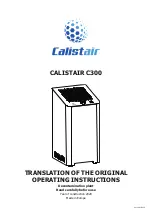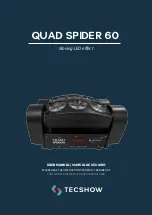
Using fast acquisition and DPO. When you turn on FastAcq, you can acquire up to 250,000 waveforms per second. In fast
acquisition mode, the dead time between acquisitions can be very short, approaching that of the finest analog oscilloscopes.
Reduced dead time means that your chances of capturing an infrequent event are greatly improved. More time is spent acquiring
and displaying your signal. And with the digital phosphor (DPO) technology, you can easily differentiate between the normal
shape of your signal and that infrequent anomaly that you want to capture.
As a comparison, high quality analog real-time oscilloscopes can sweep at high repetition rates with little dead time between
sweeps, which makes it possible to capture an infrequent event. Typical digital oscilloscopes (DSOs) have relatively long dead
times between acquisitions; infrequent events are much more difficult to capture. With fast acquisition and digital phosphor
technology, the oscilloscope acquires at a high repetition rate and then overlays the acquired information into a three-
dimensional database that is updated on the display 30 times per second.
The digital phosphor oscilloscope shows you not only the displayed waveform, but also the sample density. You can choose to
see sample density represented in a color palette or as shades of gray or shades of green. The DPO display in monochrome
green bears a strong resemblance to the CRT of a high-quality analog oscilloscope. When you increase waveform brightness
with the front-panel Intensity knob, areas of lower sample density appear more clearly.
DPO provides display benefits, whether fast acquisition is on or off. When it is on, DPO helps you identify an infrequent anomaly
in a repetitive signal, especially when either the spectral or temporal color palettes are used. The repetitive signal appears in one
color and the anomalies appear in another. When fast acquisition is off, DPO improves the waveform display quality when long
records are compressed for display with the 1000 horizontal pixels in the graticule. The compression algorithm works with the
intensity-graded display to show brighter pixels where many points have been compressed and dimmer pixels where fewer points
have been compressed.
Fast acquisition
Analog oscilloscope sweeps
“Dead time” between acquisitions
Typical DSO acquisitions
About Tektronix oscilloscopes
DPO70000SX, MSO/DPO70000DX, MSO/DPO70000C, DPO7000C, and MSO/DPO5000B Series
65
Summary of Contents for DPO2304SX
Page 1: ...Tektronix Digital Phosphor Oscilloscopes Printable Help P077006219 077 0062 19...
Page 2: ......
Page 3: ...Tektronix Digital Phosphor Oscilloscopes Printable Help www tek com 077 0062 19...
Page 32: ...Introduction xxviii DPO70000SX MSO DPO70000DX MSO DPO70000C DPO7000C and MSO DPO5000B Series...
Page 130: ...Cursor setups 98 DPO70000SX MSO DPO70000DX MSO DPO70000C DPO7000C and MSO DPO5000B Series...
Page 198: ...MagniVu setup 166 DPO70000SX MSO DPO70000DX MSO DPO70000C DPO7000C and MSO DPO5000B Series...
Page 212: ...Display setups 180 DPO70000SX MSO DPO70000DX MSO DPO70000C DPO7000C and MSO DPO5000B Series...
Page 300: ...Math setups 268 DPO70000SX MSO DPO70000DX MSO DPO70000C DPO7000C and MSO DPO5000B Series...
Page 408: ...MyScope setups 376 DPO70000SX MSO DPO70000DX MSO DPO70000C DPO7000C and MSO DPO5000B Series...
Page 510: ...Trigger setups 478 DPO70000SX MSO DPO70000DX MSO DPO70000C DPO7000C and MSO DPO5000B Series...
Page 548: ...Vertical setups 516 DPO70000SX MSO DPO70000DX MSO DPO70000C DPO7000C and MSO DPO5000B Series...
Page 605: ...Utilities DPO70000SX MSO DPO70000DX MSO DPO70000C DPO7000C and MSO DPO5000B Series 573...
Page 606: ...Utilities 574 DPO70000SX MSO DPO70000DX MSO DPO70000C DPO7000C and MSO DPO5000B Series...
Page 920: ...Index 888 DPO70000SX MSO DPO70000DX MSO DPO70000C DPO7000C and MSO DPO5000B Series...
















































